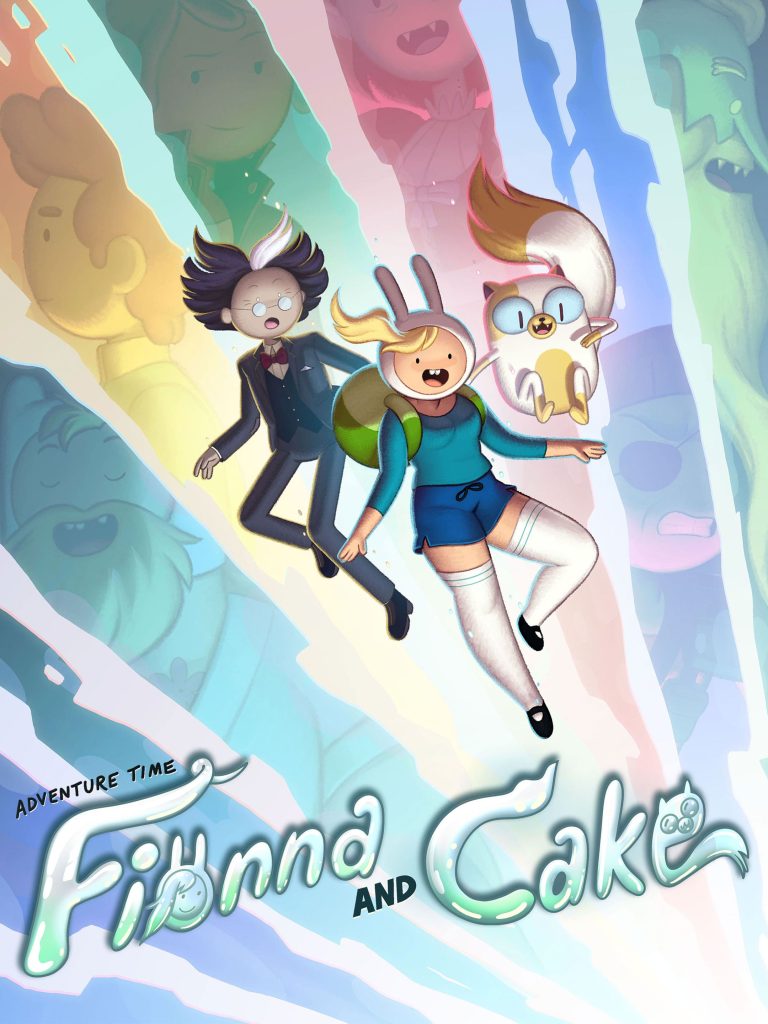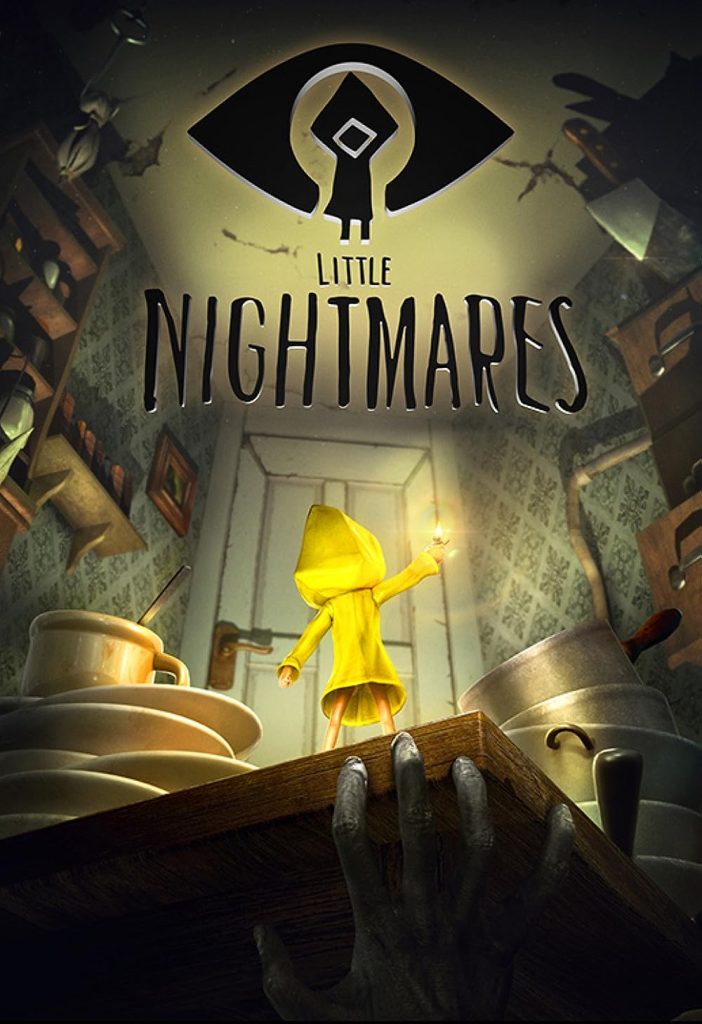Fiona and Cake
By Magdalena Nitchi

For many Adventure Time fans such as myself, the Distant Lands specials were emotionally charged: while they were a wonderful addition to the series, many felt they might well be the last animated content we got. I am delighted to have been proven wrong. HBO Max has now brought us a new Adventure Time show, based on the spin-off universe of series namesakes Fiona and Cake.
Set after the finale of the original series, the new show is an emotional rollercoaster from start to finish. Viewers are reintroduced to Fiona the Human and Cake the Cat, the genderbent versions of the title characters Finn and Jake. This show’s Fiona and Cake come from a seemingly ordinary universe with no magic, monsters, or sword-fighting heroes. But when a magical portal opens and Cake falls through, she and Fiona are transported into the world of Adventure Time, where they learn that the lack of magic in their original world is due to Simon Petrikov/the Ice King, who has lost his powers. Dimension-hopping shenanigans ensue as Fiona, Cake, and Simon fight to find a new magic crown and keep their universe from being destroyed. Throughout this quest, Fiona and Cake definitely earns its TV-14 rating: there are quite a few gruesome moments, and the great potential danger only increases the stakes.
While the majority of the show is grounded in Fiona’s perspective, we are also given glimpses of many beloved characters of the original series, and get to follow what is happening in Fiona’s hometown while she is off saving the universe.
The entire first season has now been released, and while I don’t want to spoil anything, I will say that the show builds wonderfully on the trippy, surreal, funny, and emotionally poignant world of Adventure Time. The new universes are very well crafted, and all of the Easter eggs for fans make this passion project a must-watch, even for those who haven’t fully kept up with the series. However, if you are new to Adventure Time as a whole, I recommend watching the original series first; otherwise, it may be difficult to keep up with everything. If this show brings more fans to the wonderful, classic cartoon, so much the better.
Little Nightmares I and II
By Olivia Shan

In terms of story-driven puzzle-form video games, few have surpassed the likes of Tarsier Studios’ Little Nightmares and its beloved 2021 sequel, Little Nightmares II. Set in an apocalyptic near-future, Six, a little girl clothed in a bright yellow raincoat, awakes trapped in the hull of an enormous ship. Using her tiny stature, Six must travel through the leaky bowels of the Maw and gradually uncover exactly what has happened to the other kidnapped children. Little Nightmares introduces a nightmarish world à la Spirited Away; adults come to embody the worst sins of a society in decline, while our child protagonists try desperately to escape their dismal circumstances.
Of course, this concept is hardly original. Obvious influences from Hayao Miyazaki, Neil Gaiman, and most of all Lemony Snicket are found throughout the game. But Little Nightmares feels pleasantly familiar rather than redundant. More importantly, it succeeds at creating its own distinctive atmosphere, greatly aided by a superb soundtrack. Notorious for the cryptic nature of its worldbuilding, the franchise has also accumulated a small cult following who theorize everything involving its lore (a fun rabbit-hole to fall into).
Though I have a soft spot for the original Little Nightmares— which works perfectly as a stand-alone game— its sequel undeniably measures up to the original, all the while introducing a new fleshed-out protagonist, Mono, and infusing a refreshing sense of genuine horror within the action sequences. Across both games, what is most impressive to me is how Little Nightmares succeeds at conveying so many quietly devastating character beats without its protagonists having any spoken lines. Players come away feeling deeply attached to Mono and Six and their ultimate fates, despite never hearing them speak a word.
This past year, Tarsier Studios announced that they were parting ways with the franchise, and the trailer for the series’ successor, Little Nightmares III— developed by Supermassive Games— just dropped to both the thrill and apprehension of many fans. With a brand new developer backing this third project filled with new characters and settings, it’s hard to tell just how much of the original soul of the Little Nightmares franchise will be preserved. No matter what, Tarsier Studios’ original Little Nightmares games are definite classics, and are sure to compel players (new and old) to visit and revisit them for generations to come.
Trans-Galactic Bike Ride
Par Magdalena Nitchi

Avez-vous déjà trouvé un livre si intriguant que vous avez ressenti le besoin de le lire immédiatement ? « Trans-galactic bike ride » est exactement ce que promet son titre : une anthologie de nouvelles féministes de science-fiction à propos du vélo, centrées sur les perspectives de personnages transgenres et non-binaires. De loups-garous trans dans un monde post-apocalyptique aux messagers non-binaires volant à travers les déchirures du temps et de l’espace, chaque histoire crée un monde unique, mais qui s’inscrit toujours dans les limites apparemment étroites de la collection.
En tant que lectrice avide de hope-punk, j’avais hâte d’explorer le sous-genre de la « bicycle science fiction ». Dans ces nouvelles, le vélo n’est pas seulement un symbole de conscience environnementale, mais aussi un symbole de liberté et d’action; plutôt que de s’appuyer sur des routes et du carburant comme les chauffeurs, le cycliste est en mesure d’entretenir lui-même son vélo. La communauté que les cyclistes trouvent sur la route m’inspire, et j’apprécie le nombre d’auteurs de cette collection qui ont souligné l’importance de la camaraderie et de la communauté, même lorsqu’ils passent beaucoup de temps à voyager seuls.
Mon histoire préférée de cette collection s’intitule The Edge of the Abyss, de M. Darusha Wehm. Cette histoire suit April May, une hacker indépendante et agente secrète, qui passe ses vacances dans un coin reculé de la galaxie. Sur la route, elle rencontre l’amiral Grant, un vieil ami. Malheureusement, leurs retrouvailles ne sont pas complètement joyeuses; une guerre entre-planétaires éclate, et ils se retrouvent coincés dans une gare spatiale scellée pendant que les travailleurs se font la guerre. Bien que Wehm raconte une histoire complète, la construction du monde et l’attention aux relations entre les personnages donnent l’impression que cela fait partie d’un travail plus prolongé. J’adorerais lire davantage les aventures d’April.
Si vous cherchez un recueil de nouvelles remplies de communautés queers et que vous aimez soutenir des auteurs moins connus, cette anthologie est faite pour vous. Les histoires sont assez variées malgré la petite taille de ce volume, et j’ai vraiment aimé le plongeon dans le voyage de chaque « aventurier trans ».
